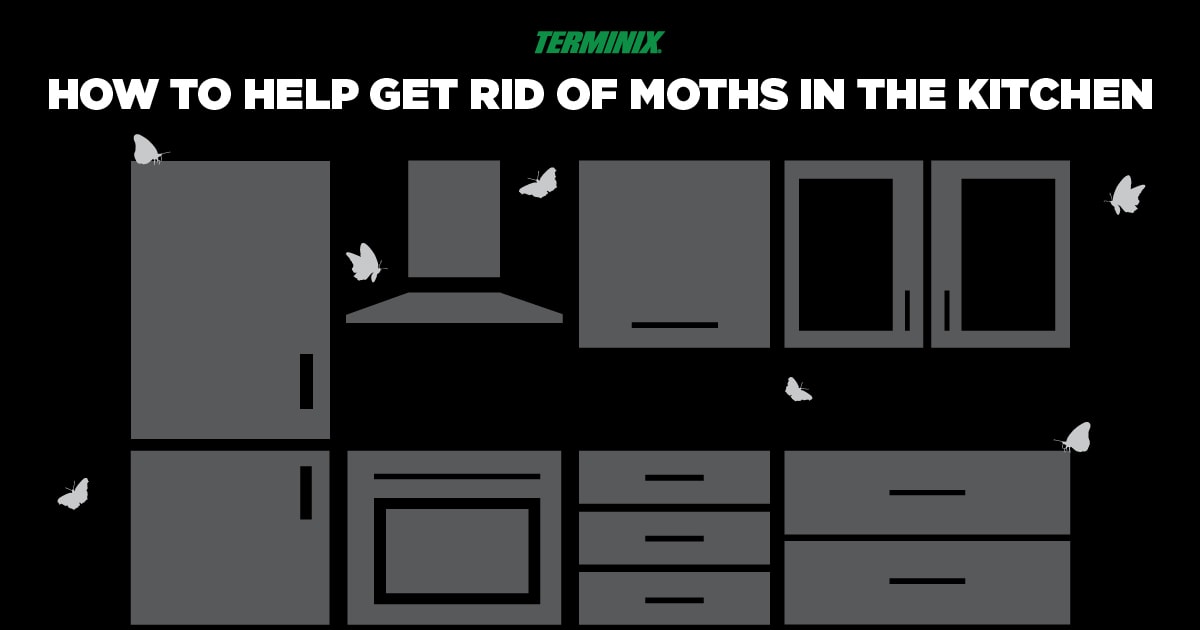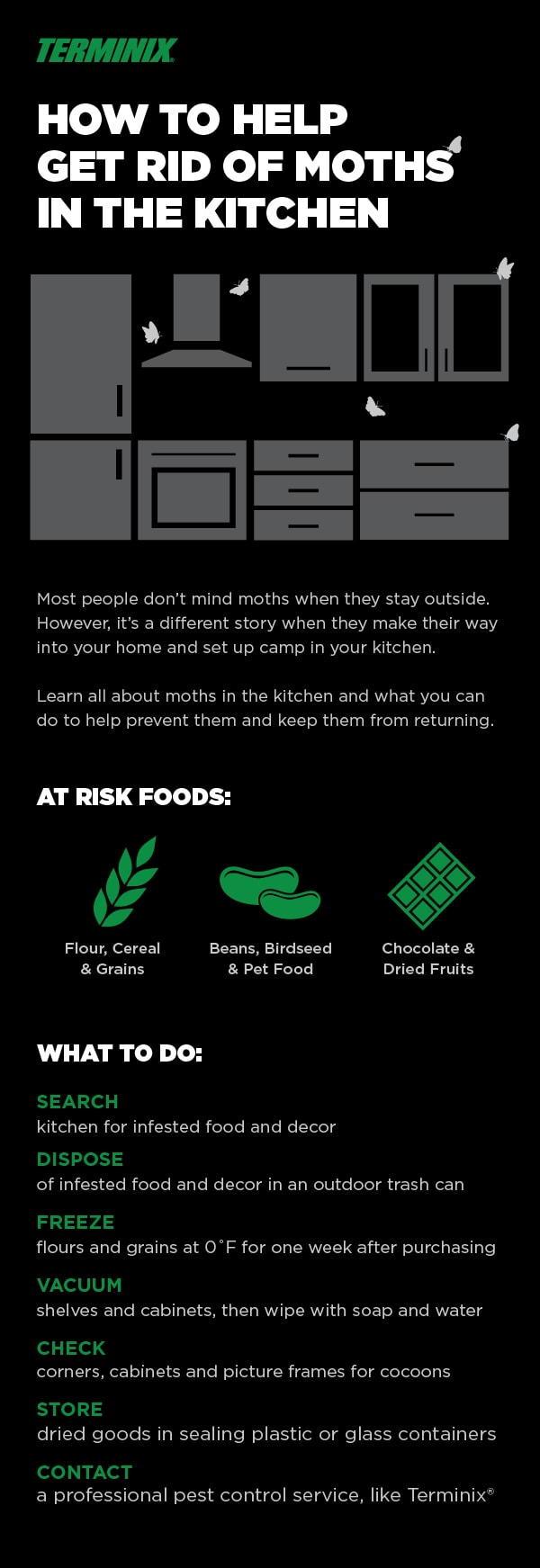Most people don’t mind moths when they stay outside. They can be pleasant to look at and even relaxing to watch. However, it’s a different story when they make their way into your home, especially if they set up camp in your kitchen.

Most people don’t mind moths when they stay outside. They can be pleasant to look at and even relaxing to watch. However, it’s a different story when they make their way into your home, especially if they set up camp in your kitchen.
Learn all about moths in the kitchen, as well as what you can do to try to prevent them and keep them from returning.
What Are Pantry Moths?
If you have moths in the kitchen, there’s a good chance that they’re one of two types:
Indian meal moths — These moths are about five-eighths of an inch in length. Most of their body is white but they do have coppery spots on their front wings. The females can lay hundreds of eggs in food material throughout their lifespan. The Indian meal moth larvae then hatch and tunnel throughout the food material. Eventually, the larvae make their way out of the food to form cocoons, which is known as pupating. If they can’t get out of the food packaging, they’ll pupate within. Indian meal moths are slow fliers that are usually spotted hanging out on ceilings or walls.
Mediterranean flour moths — Like Indian meal moths, Mediterranean flour moths grow to be about five-eighths of an inch in length. Their front wings are pale gray with spots. Here again, females lay hundreds of eggs in food material, typically attaching the eggs to food particles. After hatching, the larvae spin silk feeding tubes. The larvae pupate in or on the flour if they can’t find an exit point in the food packaging. Mediterranean flour moths fly more actively than Indian meal moths, usually in a zigzag pattern.
How Did I Get Pantry Moths?
Both types of moth can be found in almost every stage of food production and sale, from grain silos and packaging centers to distribution warehouses and grocery stores. The insects can infest an array of foods, including:
- Flour
- Cereal
- Chocolate
- Beans
- Dried fruit
- Birdseed
- Pet food
Additionally, you may unwittingly purchase décor — like wreaths and flowers — that is infested. So, long story short, you might have brought the pantry moths into your home without realizing it.
Can Pantry Moths Eat Through Plastic?
Both Indian meal moths and Mediterranean flour moths are unable to eat through harder plastics. Because of this, it’s a good idea to keep your dry goods — like cereals, flours, pet foods and other grain products — stored in sealed plastic or glass containers. That way, if contaminated food does make its way into your home, the larvae or pupae will only spoil one product as opposed to everything in your pantry.
How to Help Get Rid of Pantry Moths
If you’re trying to get rid of pantry moths, the first thing you need to do is contain the problem. Here are some steps you can take if you have moths in the kitchen.
- Find and dispose of infested foods or decorations in an outdoor trash can.
- When you bring flours or grain-based foods home, freeze them at zero degrees Fahrenheit for one week, especially if you buy in bulk. This will help kill any eggs that may be in the food.
- Vacuum shelves or cabinets that have housed infested foods, and then wipe them down with soap and water.
- Check in corners, under cabinet edges and behind picture frames for cocoons.
- As noted above, invest in tight sealing glass or plastic storage containers for all your dried goods. Additionally, consider storing grain-based foods in your refrigerator.
- Contact a professional pest control service, like Terminix®. A trained technician can evaluate your problem and customize a prevention and control plan that best fits your needs.
While there’s still always a chance that you’ll open a box of cereal or bag of bread flour only to find pantry moths, taking the above steps can help lower the odds of this happening to you.
And pantry moths are not the same insects responsible for damaging your wardrobe. Check out this post to learn about moths that eat clothes.




